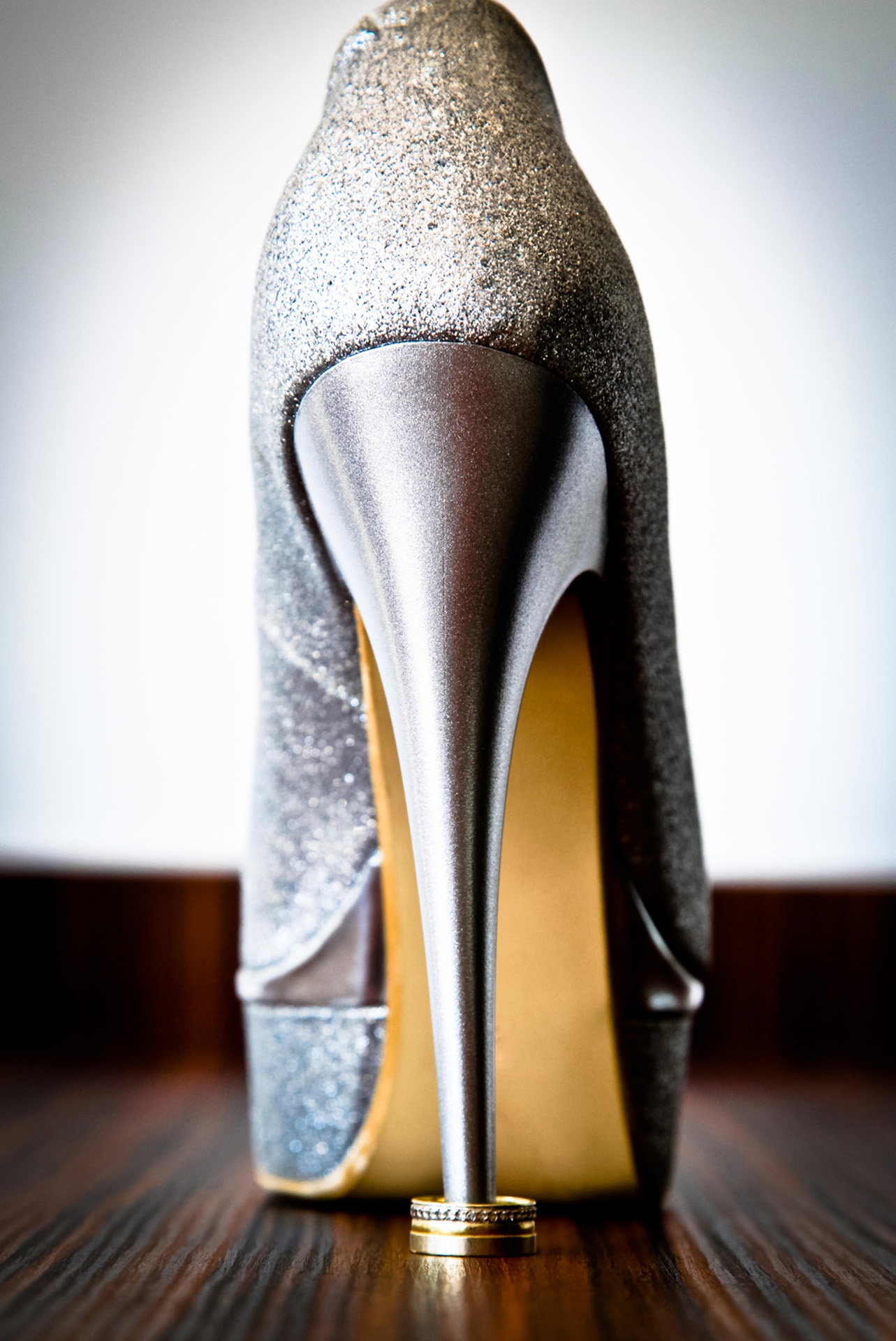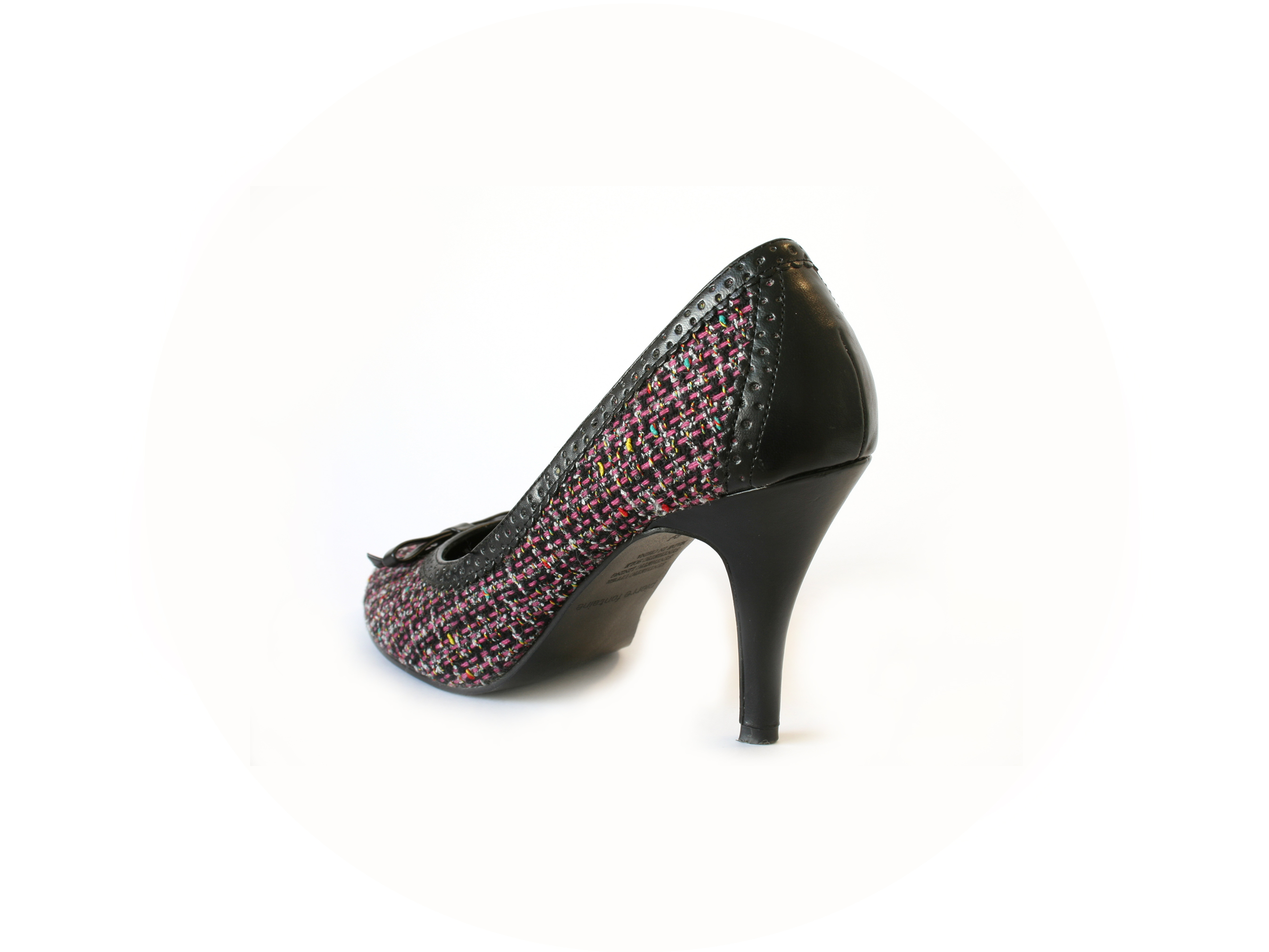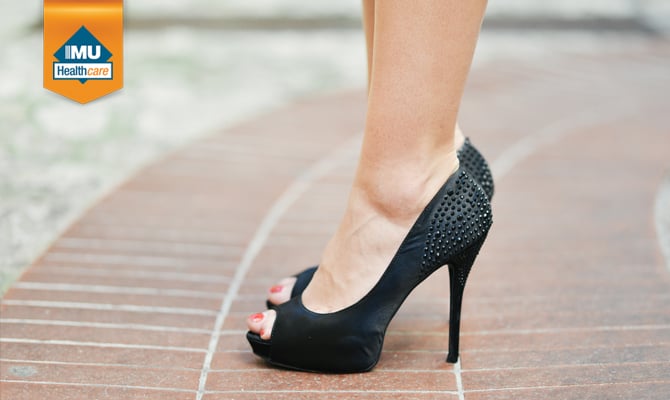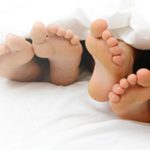When IMU Healthcare podiatrist Stella Chai advises her patients against the constant wearing of overly high heels, she gives them a crash course in biomechanics. Biomechanics is the study of human structure and movement; in Chai’s case, particularly the foot and the lower limbs.
“Walking and standing in high heels changes the dynamics of motion. High heels alter the position at which joints are allowed to move, resulting in abnormal posture of the back and pelvis. The increase of pressure focused on the ball of the foot when a woman walks in high heels strains the muscles especially in the feet and calves,” says Chai.
Towering heels are never far from a stylish outfit of the day as they create the illusion of longer, slimmer legs. However, they alter the centre of gravity and causes muscles to function abnormally, resulting in muscle strain and tear with prolonged abuse.  Chai’s rule of thumb is for women to keep their heels to less than two inches. Conversely, a totally flat shoe is also not good. Flat shoes, like ballerina pumps, can cause a range of different problems. This is because they may have no arch support, no fastening strap or laces, or no shock-absorbing material. This can cause too much friction at the heel, and toes, resulting in blisters, corns and callouses. Back, hip and knee pain can also occur from wearing flip flops and unsupportive shoes. She also points out that height is not the only denominator when deciding what kind of shoes are better for a wearer. “When it comes to the height of the heel, whether it is a stiletto or a chunky pair of wedges, they will exert the same pressure on the ball of the foot. However, a chunky heel with a strap across or an ankle strap is slightly better as it will provide more support,” says Chai. A common problem with women is that they tend to wear shoes which are too small. “Good-fitting shoes should have a space in front and should not impact your toenails against the top of the shoe. They should also ideally reflect the shape of your foot. An Asian flat, wide, boxy foot would be inappropriately shod in a pointed toe stiletto and vice versa. If you do wish to coordinate your outfit with this style of shoe, make sure your toes have sufficient space up front. The widest part of the shoe should fit the widest part of the foot. Shoes should also be made of breathable material such as leather especially in humid climates like Malaysia to reduce incidence of foot odour and fungal infections,” she advises.
Chai’s rule of thumb is for women to keep their heels to less than two inches. Conversely, a totally flat shoe is also not good. Flat shoes, like ballerina pumps, can cause a range of different problems. This is because they may have no arch support, no fastening strap or laces, or no shock-absorbing material. This can cause too much friction at the heel, and toes, resulting in blisters, corns and callouses. Back, hip and knee pain can also occur from wearing flip flops and unsupportive shoes. She also points out that height is not the only denominator when deciding what kind of shoes are better for a wearer. “When it comes to the height of the heel, whether it is a stiletto or a chunky pair of wedges, they will exert the same pressure on the ball of the foot. However, a chunky heel with a strap across or an ankle strap is slightly better as it will provide more support,” says Chai. A common problem with women is that they tend to wear shoes which are too small. “Good-fitting shoes should have a space in front and should not impact your toenails against the top of the shoe. They should also ideally reflect the shape of your foot. An Asian flat, wide, boxy foot would be inappropriately shod in a pointed toe stiletto and vice versa. If you do wish to coordinate your outfit with this style of shoe, make sure your toes have sufficient space up front. The widest part of the shoe should fit the widest part of the foot. Shoes should also be made of breathable material such as leather especially in humid climates like Malaysia to reduce incidence of foot odour and fungal infections,” she advises.
And for the record, there is no such thing as ‘breaking a shoe in.’ “A shoe should be comfortable from the time it is first put on. One way to ensure this is to buy shoes at the end of the day, when your feet have expanded. If you are buying shoes which are to be worn with socks, you should bring the exact type of sock you plan to wear with the shoes when you are trying them on. Buy shoes which fit the bigger foot and pad up the smaller foot with heel or front pads.”
 Shoes should also be selected for the activity for which they are used. An activity like Zumba which is carried out on a hard surface calls for a shoe with cushioning and laces. Chai cautions against fastening shoes in a way that one can take off the shoes without having to undo the laces. “Being able to remove your shoes with the laces still tied means your shoes may be too big, too wide, or that you may not have tied them properly. They could also mean that the integrity of the shoe is compromised, especially if you have had them for a while or are using them exclusively. Go for a 45 degree angle with your heel to the ground when lacing up shoes so that your foot does not slide about inside the shoe, and reduce the probability of suffering from anterior knee pain,” says UK-trained Chai. When buying shoes, Chai advocates purchasing quality footwear, simply because they are moulded differently, with the shoe and the heel casted in one piece which makes it less likely for a wearer to break a heel. So when buying shoes, choose to invest. Don’t buy to wear and throw away,” the podiatrist advises. Aware that affordability and cost are big issues, Chai counsels people to buy shoes they can afford as long as the heel counter is firm and do not cause the foot to twist and turn while in the shoe. If the shoes are lace-ups, ensure laces are adjustable. “.
Shoes should also be selected for the activity for which they are used. An activity like Zumba which is carried out on a hard surface calls for a shoe with cushioning and laces. Chai cautions against fastening shoes in a way that one can take off the shoes without having to undo the laces. “Being able to remove your shoes with the laces still tied means your shoes may be too big, too wide, or that you may not have tied them properly. They could also mean that the integrity of the shoe is compromised, especially if you have had them for a while or are using them exclusively. Go for a 45 degree angle with your heel to the ground when lacing up shoes so that your foot does not slide about inside the shoe, and reduce the probability of suffering from anterior knee pain,” says UK-trained Chai. When buying shoes, Chai advocates purchasing quality footwear, simply because they are moulded differently, with the shoe and the heel casted in one piece which makes it less likely for a wearer to break a heel. So when buying shoes, choose to invest. Don’t buy to wear and throw away,” the podiatrist advises. Aware that affordability and cost are big issues, Chai counsels people to buy shoes they can afford as long as the heel counter is firm and do not cause the foot to twist and turn while in the shoe. If the shoes are lace-ups, ensure laces are adjustable. “.  Pronation is a common biomechanical issue that occurs as the foot rolls inwards and the arch of the foot flattens, hence the term ‘flat feet’. Flat feet can result in ankle, knee or hip pain, and accelerate joint wear and tear if left unattended. This condition is more commonly seen in the Asian foot, so buy shoes that have good arch support and cushioning. For individuals that may have severe biomechanical issues, they may need custom insoles that correct the problem for better quality of life. This article is brought to you by IMU Healthcare.
Pronation is a common biomechanical issue that occurs as the foot rolls inwards and the arch of the foot flattens, hence the term ‘flat feet’. Flat feet can result in ankle, knee or hip pain, and accelerate joint wear and tear if left unattended. This condition is more commonly seen in the Asian foot, so buy shoes that have good arch support and cushioning. For individuals that may have severe biomechanical issues, they may need custom insoles that correct the problem for better quality of life. This article is brought to you by IMU Healthcare.









